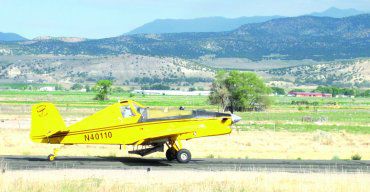Aerial Seeding begins on Seeley Burn Scar
Winter wheat seed is being dropped on about 7,000 acres of high-severity burn areas on the Seeley Fire scar of the Manti-La Sal National Forest.
The wheat is being dropped on steep slopes in hopes that the annual plant will hold the soil this winter and spring so that native species can re-establish. The greatest challenge to recovery in the burned area is the steepness of slopes. Without roots to hold the soil, it is being washed away by summer rainstorms. The wheat seed will be used to hold the soil and the native seeds in place. The native seeds have been washing away. Perennial grasses and forbs cannot successfully germinate under these conditions.
Morris Ag Air of Yuma, Ariz. has four aircraft on the job and has been seeding since Aug. 27. They will apply 187,500 pounds of winter wheat on 6,946 acres at a cost of $254,500.
The winter wheat seeding project is part of the Burned Area Emergency Response effort funded by the Forest Service.
The Manti-La Sal National Forest manages watersheds for people living in eight central/southeastern Utah counties and two western Colorado counties; it cares for 1.4 million acres of wildlife habitat, fisheries in 1,600 miles of perennial streams and 8,100 acres of lakes and reservoirs; it maintains 2,940 miles of road, 430 miles of trails, provides 550 developed campsites for the enjoyment of people who visit the Forest and is the source of 85% of the coal mined in Utah.
Aerial seeding begins in burn area

"This plane loads wheat at the Mt. Pleasant airport to spread over the Seeley fire burn scar."
